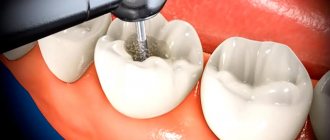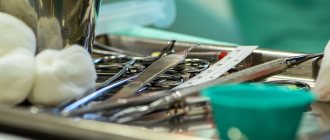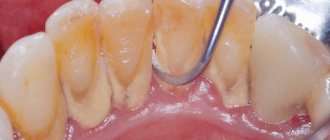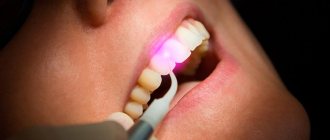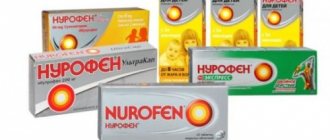Often, caries treatment is surgical, in which case it ends with the installation of a filling. Depending on the material used, the dentist recommends that the patient go without food and drinks for some time. We will tell you in the article how long you can’t eat after caries treatment.
In this article
- Why is it important to follow your dentist's recommendations?
- What determines whether you can or cannot eat after dental treatment?
- A temporary filling has been installed: how much can you eat?
- You've got a light filling - how long can you go without eating?
- Recommendations after installing other fillings
Why is it important to follow your dentist's recommendations?
Modern methods and technologies for caries treatment, which are used by doctors in dental clinics, help quickly, painlessly and effectively solve the problem of dental caries. If the doctor correctly selected the filling material and installed the filling in compliance with all technological details, the restored tooth can serve the patient for many years.
But, in addition to the professional work of the doctor and the quality of materials, the durability of the filling is affected by compliance with the dentist’s recommendations immediately after caries treatment.
One of the first questions to ask your doctor is when you can drink water and have lunch or dinner after dental treatment.
Metal fillings
In the past, metal fillings called amalgam were used in dental treatment for a long period. They were made of copper, gold and silver. Despite their strength and reliability, as soon as alternative options appeared, their popularity disappeared. The amalgam looked unsightly, took a long time to harden, and contained mercury. Patients who received such fillings complained of a metallic taste in the mouth and allergic reactions.
What determines whether you can or cannot eat after dental treatment?
Whether you can eat immediately after leaving the doctor’s office or whether you need to wait depends on what kind of filling material was used.
A few decades ago there was no such choice of materials, and dentists forbade eating and drinking for 1.5 hours after any treatment procedure. This time was necessary for the filling to completely harden. If the patient violated the doctor’s recommendation, eating ahead of time could lead to deformation of the filling. In addition, the material did not have time to hermetically close the cavity; particles of water and food got into the microcracks, which could lead to the re-development of the carious process under the filling, reducing its service life. Today, the choice of filling materials for dental treatment has expanded significantly. In particular, there are those that harden almost instantly, and their quality and strength are not affected by the consumption of food or drinks. The dentist gives each patient individual recommendations on how much he should not eat (an hour, two, and sometimes he can eat right away). If a person wants to have the opportunity to eat after caries treatment, he must tell the doctor about this before starting dental procedures.
When to eat mono after filling?
People who have ever had a filling installed know that you can eat no earlier than two hours later. This time is enough for the material to acquire the required hardness and be well fixed in the tooth crown.
Modern materials differ from classical composites, so the question of whether it is possible to eat after a light filling is relevant. Dentists have different opinions regarding how long after a light filling can be eaten without the risk of damage. Some experts are of the opinion that after a light filling you can eat immediately. This is explained by the properties of photopolymers. The material hardens under the influence of ultraviolet rays, which means that after the procedure is completed, the filling should not be exposed to external influences.
However, the risk is not completely excluded. For complete confidence in the readiness of the material, and most importantly, its reliable fixation in the tooth. For this reason, most experts, when asked “how long not to eat after installing a light filling,” recommend refraining from eating and drinking for at least 2 hours.
A temporary filling has been installed: how much can you eat?
Sometimes, for pulpitis or advanced forms of caries, treatment is carried out in two or more visits. At the first appointment, the doctor opens the tooth, removes the affected tissue and, if necessary, puts a medicinal product that should remain in the tooth cavity for several days. To prevent bacteria and contaminants from entering the cavity during this time, the doctor closes it with a temporary filling. The peculiarity of such fillings is that they are made of a more fragile material than permanent ones.
Therefore, when it comes to a temporary filling, the dentist usually gives the following recommendations:
- do not eat for about two hours (the exact time depends on the chosen material);
- Until the temporary one is replaced with a permanent one, avoid solid foods that can cause the filling to fall out - crackers, nuts, etc.
Types of fillings and care features
Different fillings have their own characteristics in terms of wearing time, hardening, etc. For example, light fillings harden under the influence of a halogen lamp in a matter of seconds, so you can eat or drink water almost immediately after the procedure. However, you should not remove all restrictions: complete hardening of the filling occurs in two days. Composite fillings are very sensitive to alcohol at first, so you should avoid alcohol and alcohol-containing rinses, as the filling may soften.
After treatment, we recommend that you check with your dentist about the type of filling he placed and after what time you can eat.
You've got a light filling - how long can you go without eating?
Light or light-curing filling is the most modern solution in dental filling. It is distinguished by high aesthetic characteristics, strength and durability. The peculiarity of installing such a filling is that each layer of material is illuminated with an ultraviolet lamp, under the rays of which it hardens. Hardening occurs due to the fact that the gel particles that are in the material, under the influence of UV rays, disintegrate into radicals and instantly harden.
Some dentists allow you to eat almost immediately after filling, since eating does not affect the strength of the light-curing composite. But in the first days there remains a risk of staining the filling, so you should not drink coffee, tea, Coca-Cola or other products with high coloring properties for a couple of days.
What complications can there be?
After the light reflection filling is installed, how long before you can eat? Our clinic specialists advise patients to abstain from food for 2 hours and from drinking for 1 hour. Such recommendations are not mandatory, but they can reduce the risk of complications after filling.
If the recommended time interval is not observed, complications may arise:
- rapid darkening of tooth enamel;
- staining of enamel (under the influence of dyes);
- It's a dull pain;
- swelling of the gums;
- crown destruction;
- filling falling out.
Also, in the first days after filling, patients should avoid eating any foods with increased hardness. In particular, it is not advisable to chew seeds, nuts or objects (for example, a pencil or pen).
Recommendations after installing other fillings
Chemical-curing fillings are cheaper than light-curing fillings, so they are still widely used in dental practice. It takes time to completely harden, so you will have to go a couple of hours without food.
Cement fillings are used very rarely today because they are inferior to other materials in strength, are difficult to grind, fall out quickly, and the color of the material is not easy to match to the natural shade of the teeth. Perhaps the only advantage of cement fillings is their low price, so they can still be used in pediatric dentistry as a budget alternative to more expensive options.
It is not recommended to eat or drink immediately after installing a cement filling. The exact time of abstinence from food and drink will be announced by the doctor. If anesthesia was used during the treatment of caries, then, regardless of the material and type of filling, you must refrain from eating for a couple of hours until the effect of the anesthetic injection wears off. This recommendation is due to the fact that the sensitivity of the oral cavity is reduced and during chewing you can damage the cheeks or tongue.
To further monitor the condition of fillings and the oral cavity, it is recommended to visit a dentist once every six months for a preventive examination. It is recommended to care for filled teeth in the same way as for ordinary ones - brush twice a day with toothpaste and a brush, use additional hygiene products (rinses, floss), regularly visit a hygienist and carry out professional hygiene.
Plastic fillings
The appearance of plastic fillings on the dental market has caused a stir. These fillings quickly became popular, but, unfortunately, this material turned out to be toxic. Plastic also had disadvantages in the form of staining under the influence of drinks and food, and it also quickly lost its shape. 90% of patients subsequently developed pulpitis or periodontitis, an allergic reaction to the material. If a crown was installed on a plastic filling, the tooth underneath was destroyed in a very short time. When this deficiency was discovered, the substance was no longer used, and patients began en masse to replace previously installed fillings. That is why the question of when to eat after installing plastic fillings is not relevant today.
What can you eat after cleansing?
After the procedure, dentists impose a number of restrictions on the patient’s eating behavior. In the first 2-3 days, foods that irritate tooth enamel are excluded from the diet: sour, hot, salty, sweet. The sensitivity of teeth after ultrasonic cleaning of stone is increased: bright tastes and temperature changes provoke pain.
Products containing dyes are prohibited. The list of what not to eat after brushing your teeth for tartar includes:
- black tea and coffee;
- colored carbonated drinks;
- chocolate;
- soy and balsamic vinegar;
- mustard and curry spices;
- red wine and grapes;
- berries (blueberries, blueberries, currants);
- red and orange vegetables;
- sweets containing dyes.
A number of products are recommended for consumption. They strengthen tooth enamel and prevent the formation of plaque and caries. Dentists advise eating dairy products in any form. Fruits and vegetables, particularly apples, reduce the amount of tartar. It is useful to drink diluted apple juice, which dissolves plaque.
If the filling is temporary
A temporary filling is usually placed for 1 to 2 weeks, so it is not as durable as a permanent one. You don’t need to be afraid to brush your teeth, but you shouldn’t put too much pressure on the tooth while brushing. It is also recommended to avoid chewy foods and chew on the opposite side.
Hygiene after tooth filling
In general, oral care after a filling is installed is no different from usual.
| Brush your teeth twice a day for 2 – 3 minutes. It is better to use a brush with soft bristles that does not scratch the enamel and the surface of the filling. |
| Try not to brush your teeth with abrasive whitening toothpastes. |
| As an addition to daily care, we recommend using an irrigator. It cleans hard-to-reach places from food debris without harming enamel, gums and fillings. |
In the first days after filling
The filling easily absorbs coloring pigments, so you should adjust your diet in the first week.
- Avoid coloring foods (coffee, tea, bright berries, beets, red wine, foods with food dyes).
- Avoid sticky and hard foods (nuts, toffee, kozinak). Hard products can deform the surface of the filling, while viscous products, due to their sticky consistency, contribute to the development of caries.
- Food should not be too hot or cold. The seal must be properly secured. Temperature changes, on the contrary, will interfere with a tight seal.
- It is better to chew on the opposite side.
What about smoking?
It is not advisable to smoke immediately after the procedure, since tobacco smoke affects the adhesion of the filling material to the tooth tissue. In addition, smoking can cause the filling to change color and be very different from the enamel.
The dentist answered the most common questions
What could be more ordinary than brushing your teeth?
It would seem nothing, however, this activity also raises questions.
Do you need mouthwash and dental floss?
How can you tell if your dentist is pushing unnecessary procedures?
Why is visualization of work quality important?
Users of Apteka.ru asked about this, and their questions were answered during the live broadcast by Svetlana Gaek, dentist, head of a network of dental clinics.
How do you know that your dentist is not giving you unnecessary, expensive procedures or appointments?
Ask the doctor to explain what procedures he is going to do, and if possible, take a clinical photograph so that you can see with your own eyes exactly how the tooth is damaged.
Make sure you understand the treatment process. Of course, something can always go wrong, so don't be afraid to tell your doctor about it and perhaps come for an additional consultation.
Clinical photography is also very important: it is a way to monitor the treatment process at all its stages. Photography helps plan treatment and show the patient existing disorders.
Is it true that tooth decay is contagious?
No, tooth decay is not contagious. You can only become “infected” by bad habits: for example, lack of oral hygiene.
Why does a healthy tooth react to cold or hot food? Can this be cured?
This is a normal reaction. If there is no pain that lasts for several days, then there is no reason to worry. If the pain continues, you should consult a doctor
Why do teeth change color?
Over time, the enamel wears off. In addition, teeth darken from smoking, drinking coffee, alcohol, and acidic foods.
Also, the tooth can suddenly darken if the inflammatory process has reached the nerve.
Is it necessary to remove wisdom teeth?
Wisdom teeth do not have to be removed. If they are located in the dental arch, grow straight and healthy, and do not cause inconvenience, then they do not need to be removed.
What to choose: filling or inlay?
Depending on the tooth decay. If it is destroyed by less than half, then you need to put a filling, and if more - an inlay or a crown. The location of the destruction and the price also matter: an inlay is more expensive than a filling.
Why do my gums bleed? Is it dangerous?
If your gums are bleeding, you should consult your dentist.
Most often this is due to poor hygiene, unhealthy lifestyle (particularly smoking) and diseases of the gastrointestinal tract.
The quality of water also matters: if you know that tap water is bad and hard, then use filtered water to brush your teeth.
What's wrong with a malocclusion, besides aesthetic problems?
An incorrect bite makes it difficult to brush your teeth. Where teeth are particularly close to each other, infections or pathologies of the mucous membrane can develop.
How do you know when a tooth can be cured and when it’s time to remove it?
The patient must decide this for himself together with the doctor. One situation can have many solutions. Of course, tooth extraction costs less than treatment, but the consequences should be taken into account. Even if finances do not allow you to treat a tooth, the clinic can accommodate you and offer an installment plan.
Is it necessary to cover the exposed necks of teeth with a filling?
If they don’t bother you and it doesn’t bother you, then it’s not necessary. However, it is better to close it to avoid nerve damage.
If there is a cyst on a tooth, is it necessary to remove it?
A dental cyst can only be accurately diagnosed after its removal. Cyst formations respond well to treatment. They don't bother you until they become inflamed, so it's worth having all your teeth checked by a dentist.
What drinks and foods are harmful to teeth?
In fact, coloring foods are harmful: coffee, tea, soda, bright berries and fruits. To reduce their impact on tooth enamel, you need to brush your teeth right away.
Acidic foods are also harmful: tomatoes, citrus fruits, white wine.
How to get rid of fear of dentistry?
Through consultation. If you are afraid of procedures, you can ask the doctor to show the devices, explain what procedures he will perform, and why. After this, the fear should decrease. To know for sure that you have come to a good clinic, inspect its equipment.
